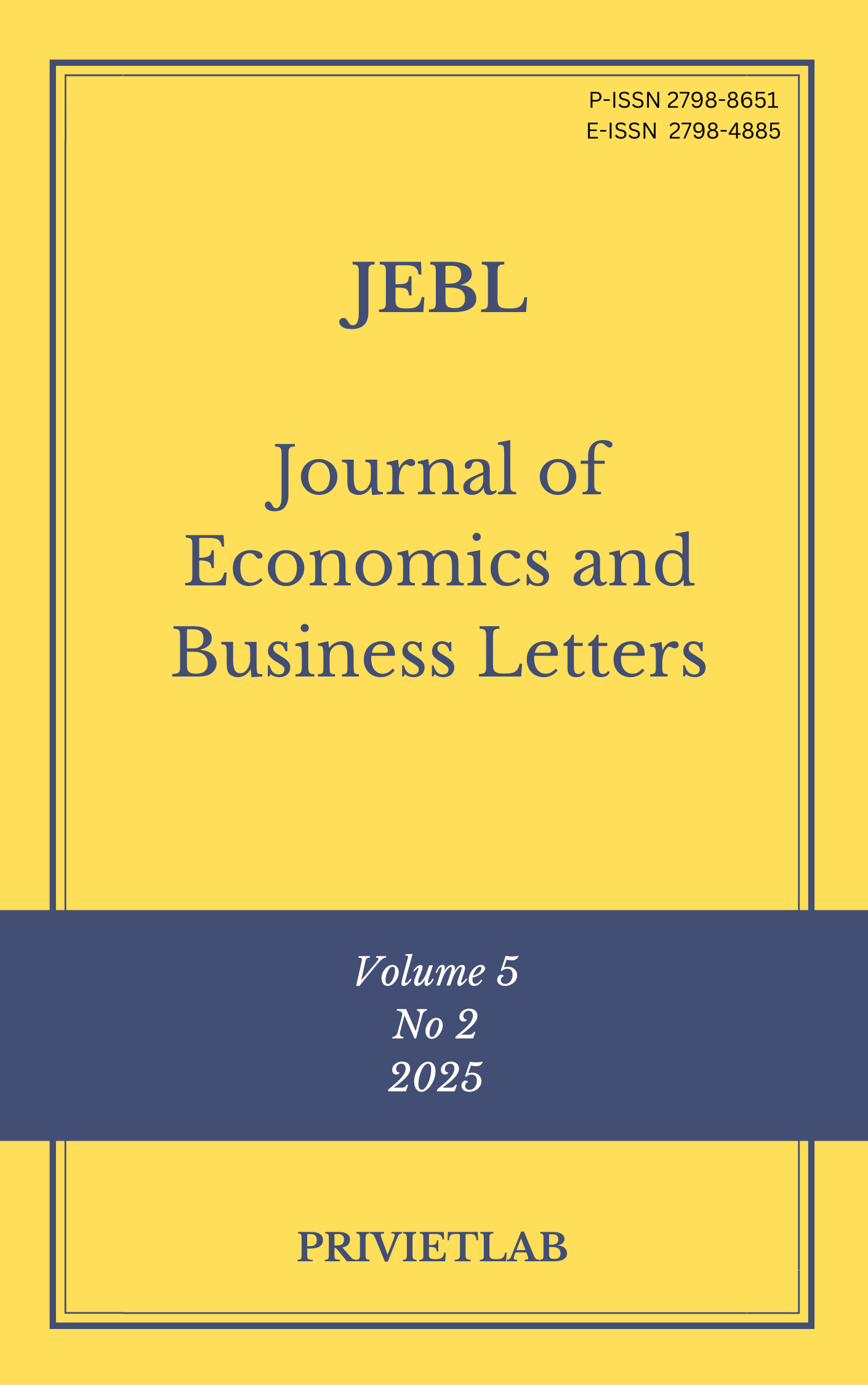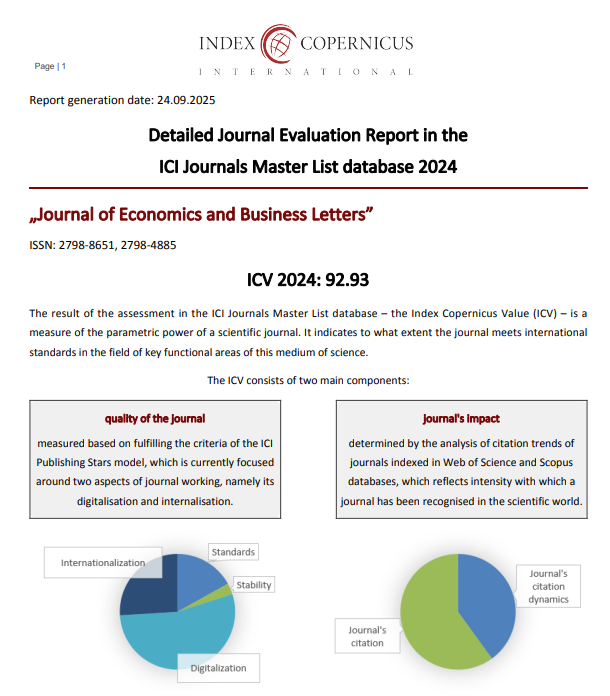Organizational commitment, compensation, and competence as drivers of employee performance: Evidence from PT Pegadaian Condet Branch, East Jakarta
DOI:
https://doi.org/10.55942/jebl.v5i2.867Keywords:
organizational commitment, compensation, competence, employee performance, PegadaianAbstract
This study examines how organizational commitment, compensation, and competence shape employee performance in a frontline state‐owned financial services context. Using an explanatory, cross-sectional survey of all accessible employees at PT Pegadaian (Condet Branch, East Jakarta; N = 110, April–May 2012), we operationalized commitment (three-component orientation), compensation (perceived fairness, risk-adjusted allowances, benefits), competence (role-relevant knowledge, skills, behaviors), and performance (task and contextual). Assumption checks supported OLS modeling (normal residuals; VIF < 3; Durbin–Watson = 1.721). Bivariate results showed strong, positive associations with performance (commitment r ≈ 0.70; compensation r ≈ 0.64; competence r ≈ 0.81). In the multiple regression, the joint model was highly significant (F = 82.44, p < .001) with substantial explanatory power (R² = 0.700; adj. R² = 0.691). Competence had the largest unique effect (β ≈ 0.640, p < .001), commitment remained a positive predictor (β ≈ 0.257, p = .005), while compensation became non-significant (β ≈ 0.052, p = .564) once the other two were controlled. Findings suggest performance in high-risk branch operations is driven primarily by capability (accurate appraisal, procedural reliability, customer handling) and service-oriented identification with the organization; compensation appears to act indirectly by enabling competence and supporting commitment rather than exerting a large standalone effect. Practical priorities include role-specific competency academies, visible meritocracy to strengthen affective commitment, and risk-aligned but quality-sensitive rewards that reinforce capability and culture.
References
Boyatzis, R. E. (2008). Competencies in the 21st century. Journal of Management Development, 27(1), 5–12. https://doi.org/10.1108/02621710810840730
Campbell, J. P., McHenry, J. J., & Wise, L. L. (1990). Modeling job performance in a population of jobs. Personnel Psychology, 43(2), 313–333. https://doi.org/10.1111/j.1744-6570.1990.tb01561.x
Campbell, J. P., & Wiernik, B. M. (2015). The modeling and assessment of work performance. Annual Review of Organizational Psychology and Organizational Behavior, 2, 47–74. https://doi.org/10.1146/annurev-orgpsych-032414-111427
Huselid, M. A. (1995). The impact of human resource management practices on turnover, productivity, and corporate financial performance. Academy of Management Journal, 38(3), 635–672
Jenkins, G. D., Jr., Mitra, A., Gupta, N., & Shaw, J. D. (1998). Are financial incentives related to performance? A meta-analytic review of empirical research. Journal of Applied Psychology, 83(5), 777–787. https://doi.org/10.1037/0021-9010.83.5.777
Judge, T. A., Thoresen, C. J., Bono, J. E., & Patton, G. K. (2001). The job satisfaction–job performance relationship: A qualitative and quantitative review. Psychological Bulletin, 127(3), 376–407
Meyer, J. P., & Allen, N. J. (1991). A three-component conceptualization of organizational commitment. Human Resource Management Review, 1(1), 61–89. https://doi.org/10.1016/1053-4822(91)90011-Z
Ryan, R. M., & Deci, E. L. (2000). Self-determination theory and the facilitation of intrinsic motivation, social development, and well-being. American Psychologist, 55(1), 68–78. https://doi.org/10.1037/0003-066X.55.1.68
Sugiyono (2004) Metode Penelitian Bisnis Alfabeta, Bandung
Tavakol, M., & Dennick, R. (2011). Making sense of Cronbach’s alpha. International Journal of Medical Education, 2, 53–55. https://doi.org/10.5116/ijme.4dfb.8dfd
Downloads
Published
How to Cite
Issue
Section
License
Copyright (c) 2025 Jasodin Jasodin

This work is licensed under a Creative Commons Attribution 4.0 International License.
















